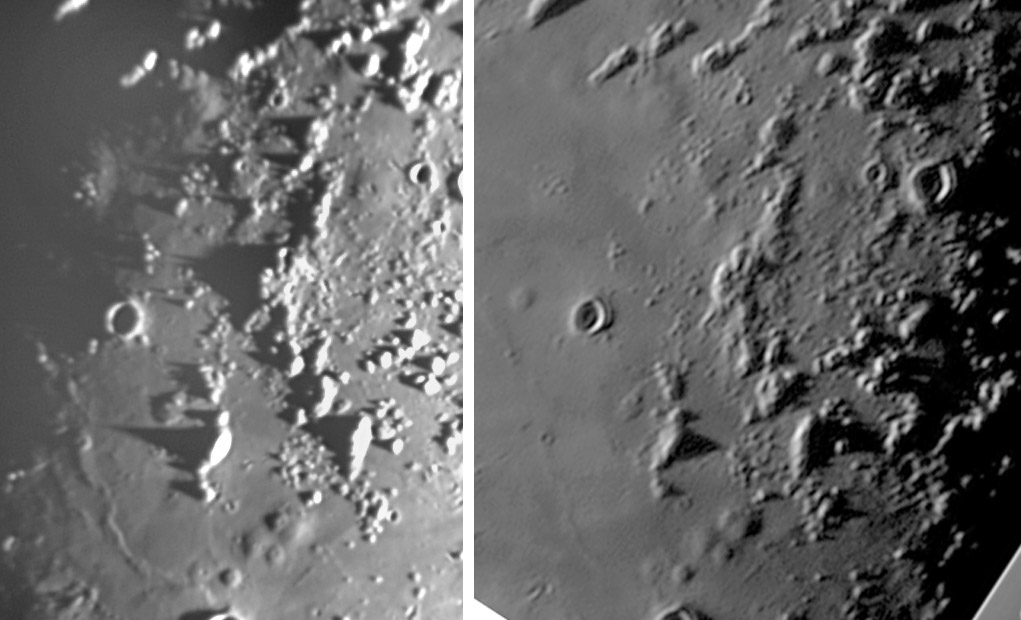
left image by K.C. Pau, Hong Kong; right image by Achille Giordano, Italy
One of the greatest concentrations of volcanic domes on the Moon is the region near the 13 km wide crater Milichius (center left), about 300 km west of Copernicus. No one has ever satisfactorily explained why all these domes are here. It probably has to do with the shallowness of the mare (domes don’t often occur in the middle of mare basins) and nearness to basin edges (which presumably means deep fractures that allow easy rise of magmas to the surface). But there are lots of places in similar environments - around Crisium, for example - that lack domes. These two recent images show the domes 15 days apart under rising and setting Suns. The two parallel ridges north of the Hortensius domes are only about two degrees apart - illustrating how small differences in distance from the terminator are critical for detecting low domes. For example, on KC’s image (left) a swell is clearly visible around a series of hills right on the terminator. But in Achille’s image, where the terminator is about 6° distant, only a slight color difference from the surrounding mare hints that there is something odd around the hills. Another interesting change of character occurs among the six Hortensius domes near the bottom center. In the right image, the top right dome is much more prominent than the one to its left, but the opposite is true for the left image. If an observer sees or images only at one of these illuminations, he would have an incorrect assessment of the relevant sizes of these domes. No one image is the truth, multiple perspectives are required to understand any place on the Moon.
Technical Details:
Left: 30 Nov 2006. 10″ f/6 Newtonian + 5X barlow + Philips Toucam Pro.
Right: 15 Nov 2006, 04:34 UT. ETX 125 Mak f/15 + 2X barlow Apo + Philips Toucam Pro; mosaic 2 images compiled from 251 frames.
Related Links:
Rükl Plate 30
Yesterday's LPOD: A Gray Day
Tomorrow's LPOD: What's Your Lunar Address?
COMMENTS?
Register, Log in, and join in the comments.



